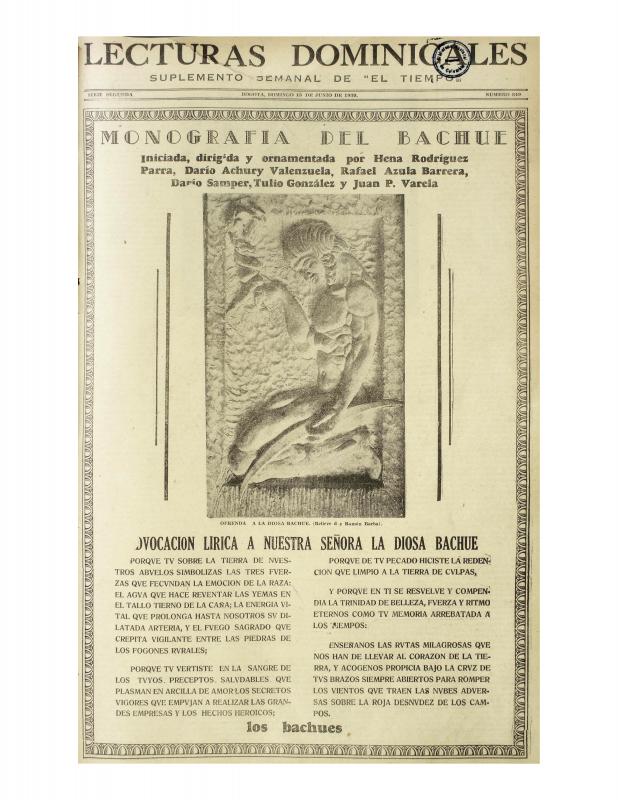In this conversation, Hena Rodríguez (1915–1997), with her intriguing character, speaks of her work and her career, with which disturbingly, the interviewer seems largely unfamiliar. The radio program Cosas de Mujeres on HJCK featured usually brief and simplistic interviews with outstanding women in an array of fields. Regardless, Hena’s statements outlines certain [difficult] aspects of the visual arts that not only relate to her specific practice but are also common difficulties for her discipline. While Rodríguez asserts that she first started teaching out of financial need, she is enthusiastic about the projects that she was developing at the time in the context of the Art Program of the Universidad de Los Andes.
Hena Rodríguez is one of the Colombian artists that founded the Bachué group, a collective committed to nationalist ideas and indigenous art from Colombia. Bachué was the most important female god of the Chibcha culture. Intellectuals Darío Achury Valenzuela (1906–1999), storywriter Tulio González (1906–1968), poet Darío Samper (1909–1984), Juan Pablo Varela, politician Rafael Azula Barrera, and artist Hena Rodríguez made her the symbol of their movement. In 1930, what was called the “Monografía del Bachué”—more commonly known in Colombian art history as Bachué’s manifesto [see doc. no. 1074707]—was published in the Bogotá newspaper El Tiempo.
In the chapter “La reorientación del movimiento escultórico,” art historian Álvaro Medina (b. 1942) discusses Colombian art of the twenties and thirties, specifically the events that made a transformation in local sculptural practice possible during those decades. In relation to Hena Rodríguez’s work, Medina places emphasis on the use of synthesis in her sculpture as a means to address the native tradition without resorting to imitation. The motifs and characters she employed reveal the nationalist sentiment characteristic of members of the Bachué movement, as well as the social problems of an era.

